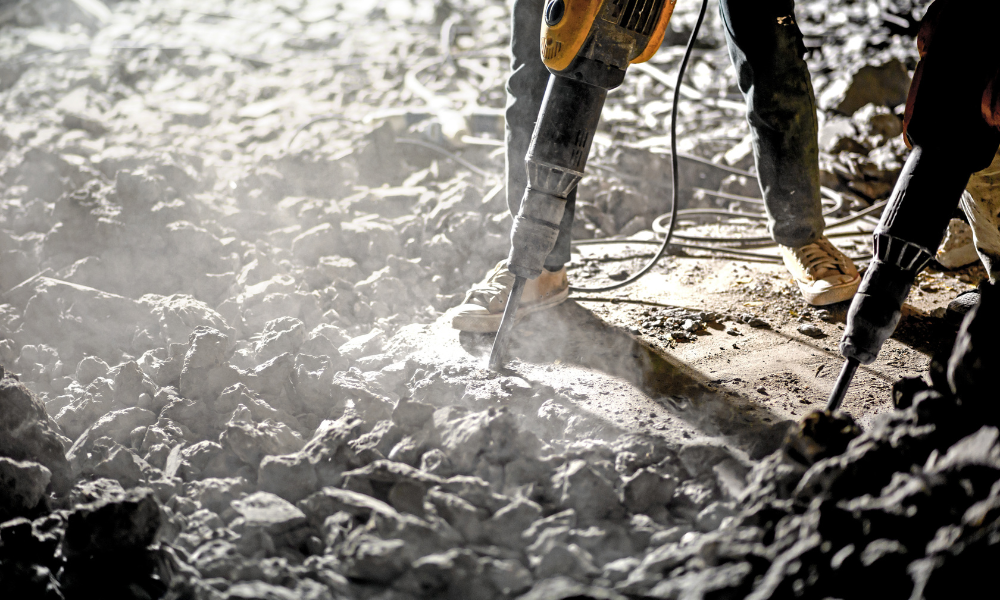University of Ottawa needs health and safety leaders to complete survey

"Our whole focus is studying and understanding the human response to extreme heat," says Emily Tetzlaff, a PhD candidate at the University of Ottawa. Tetzlaff is part of the Human and Environmental Physiology Research Unit (HEPRU) and is currently spearheading a project that could significantly impact workplace safety in Ontario. The project, the HEPRU Occupational Heat Stress Knowledge Assessment Tool (HEPRU-OHSKAT), aims to evaluate and enhance the protection against heat stress among workers in the province.
Heat stress is a growing concern, especially in the face of climate change and increasing global temperatures. For many workers, particularly those in industries such as construction, agriculture, and manufacturing, heat stress can pose serious health risks. These risks include heat exhaustion, heat stroke, and other heat-related illnesses, which can be fatal if not managed properly.
"We do it both from the public health perspective but as well the occupational health and safety," Tetzlaff explains. The initiative is particularly timely given the impending regulatory changes in Ontario that will specifically address heat management for workers. These changes will place more responsibility on health and safety personnel to ensure compliance and protect workers from heat-related hazards.
To prepare for these changes, Tetzlaff and her team have developed the HEPRU-OHSKAT, an online tool designed to assess the current state of knowledge among workers and safety personnel about managing occupational heat stress. "We've designed an assessment tool... that basically tests competencies of understanding thermal regulation, what happens to the body when it's in heat and humidity, and the controls that can be employed to help protect workers," she says.
The HEPRU-OHSKAT includes a series of questions based on general heat stress knowledge, occupational heat stress prevention and management practices, and the use of administrative and engineering controls to mitigate heat strain. The tool also evaluates the understanding of the signs and treatment of heat-related injuries.
The survey, which takes about 20 minutes to complete, is aimed at two main groups: health and safety personnel and the general working population in Ontario. This dual approach allows the team to compare the baseline knowledge of those with safety responsibilities against the general workforce.
Participation in the survey is crucial for the project's success. Tetzlaff emphasizes the importance of honest and uninfluenced responses: "We truly want this to be your current knowledge at this moment that you're completing it." By gathering this data, the team aims to validate the tool and use it as a metric for future training modules and information dissemination.
For health and safety leaders, the HEPRU-OHSKAT offers an opportunity to test their knowledge in a practical and engaging way. "We want this to be kind of an awareness-raising of like, please use us, come engage with us," Tetzlaff says. She hopes that this tool will not only help individuals understand their own competency levels but also highlight the resources available at HEPRU for advancing workplace safety in the context of heat stress.
The data collected from this survey will remain fully anonymous, ensuring that participants can contribute without concern for privacy. This anonymity is intended to encourage more candid responses and provide a more accurate picture of the current knowledge landscape.
"I don't want people to panic when they hear the word 'test'," Tetzlaff adds. "It's more about checking your competency and knowledge and knowing that you have this resource within the country that you can turn to for advanced knowledge on it."
With the summer months bringing sweltering temperatures, the timing of this project couldn't be more pertinent. For those interested in participating, the survey can be accessed at this link. By contributing to this research, participants can play a vital role in enhancing the safety and well-being of workers across Ontario.
As Tetzlaff puts it, "we want to use this as a new metric to continue to monitor knowledge and support OHS personnel moving forward." Your participation could be the key to unlocking better heat stress management practices and ensuring a safer future for all workers.





